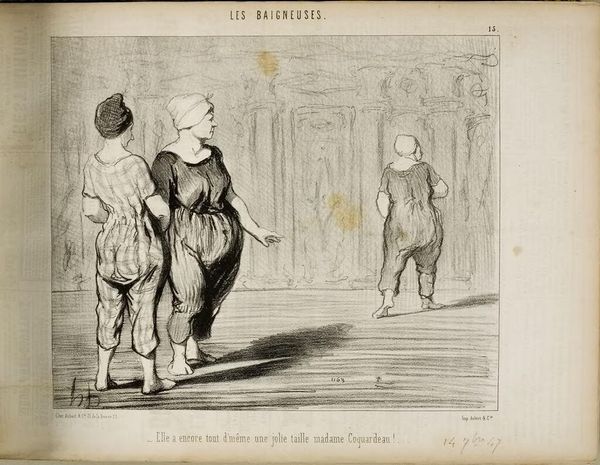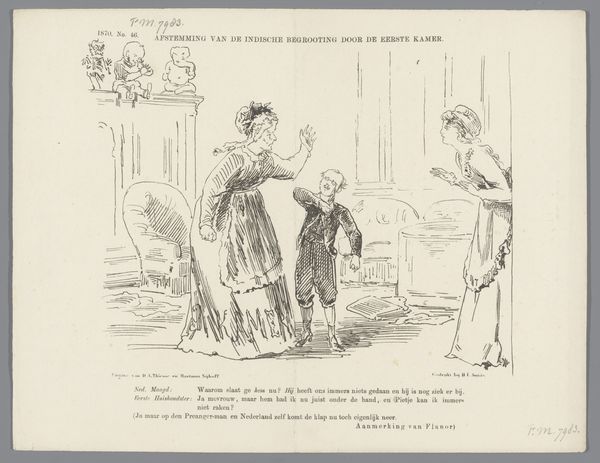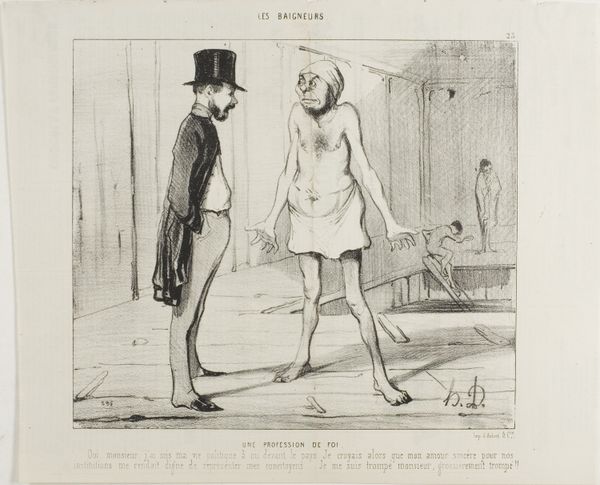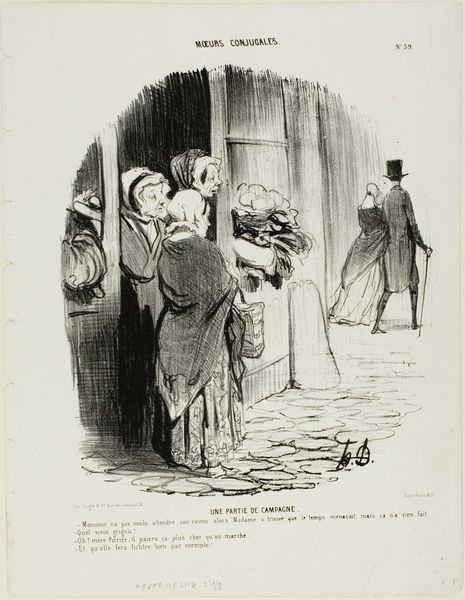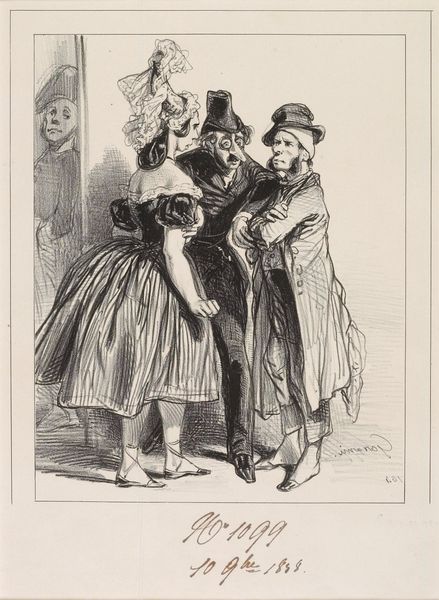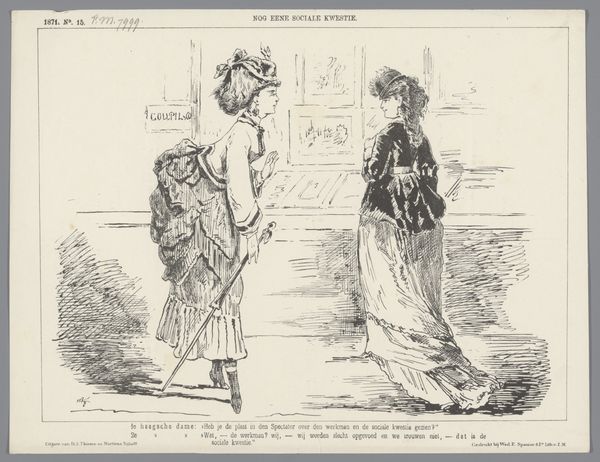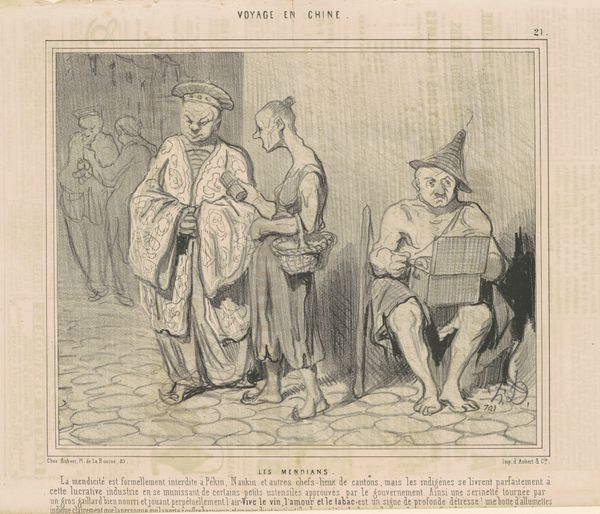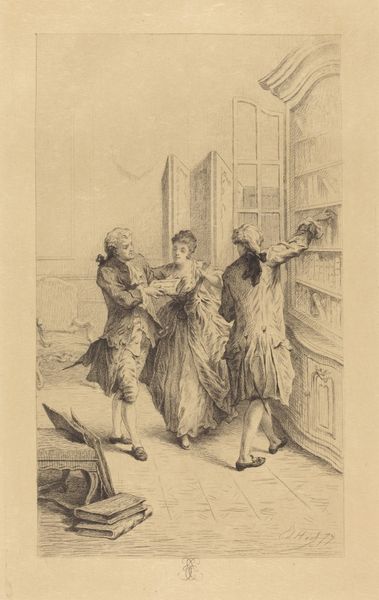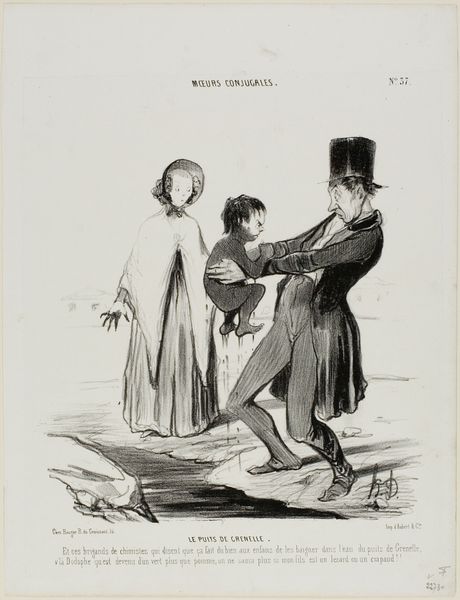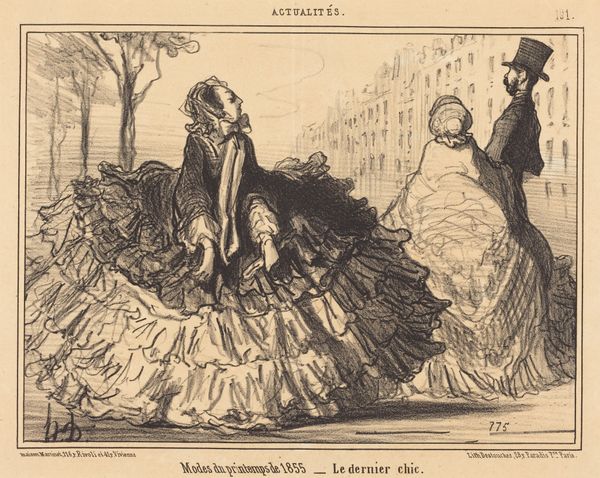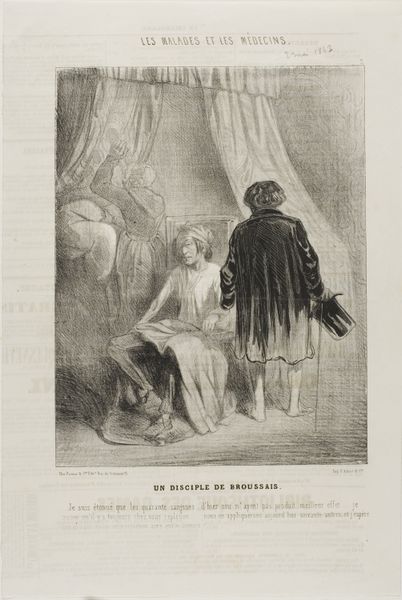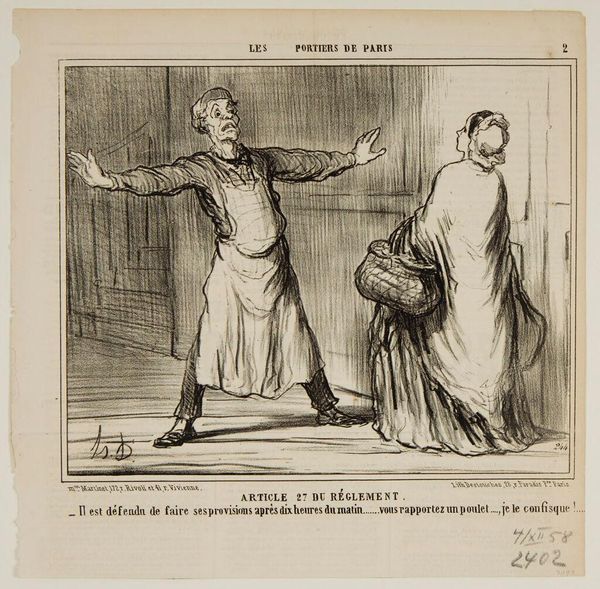
Elle a encore ... une jolie taille Madame Coquardeau! c. 19th century
0:00
0:00
lithograph, print
#
comic strip sketch
#
imaginative character sketch
#
quirky sketch
#
lithograph
# print
#
caricature
#
sketch book
#
figuration
#
personal sketchbook
#
idea generation sketch
#
sketchwork
#
romanticism
#
sketchbook drawing
#
genre-painting
#
storyboard and sketchbook work
#
sketchbook art
Copyright: National Gallery of Art: CC0 1.0
Editor: This is "Elle a encore ... une jolie taille Madame Coquardeau!" a lithograph print by Honoré Daumier from the 19th century. It seems to depict three women in bathing suits, perhaps at the beach. I'm struck by how… unflattering they are. What's going on here? Curator: Well, Daumier was a master of social commentary. He used caricature to critique the bourgeoisie of his time. Notice the title: “She still has quite a nice figure, Madame Coquardeau!” The inscription suggests satire aimed at societal standards of beauty. Editor: So, these weren't intended as portraits, but more as statements about society? How were images like this consumed at the time? Curator: Exactly. Daumier's prints were widely circulated in newspapers and journals like *Le Charivari*. Think of them as early political cartoons, reaching a broad audience. He's commenting on body image and potentially mocking the hypocrisy of bourgeois ideals. Do you see any indication of place? Editor: It's hard to tell exactly where it is, but considering the title, it could be some public baths that cater to a bourgeoise clientele, and, therefore, it suggests these places can be scrutinized, caricaturized... and possibly considered laughable, especially the poses and bathing suits! Curator: Precisely. The “stage” is public space, and women are on display... But what happens with the way that we represent them in imagery? Who gets to see the images and react? All those things also play into understanding the print’s importance in its context. Editor: I never thought of it that way. So much is revealed once you start looking beyond just the immediate image! Curator: Exactly. Context is key to unlocking a work's meaning, especially when dealing with political art and its role in reflecting and shaping public opinion.
Comments
No comments
Be the first to comment and join the conversation on the ultimate creative platform.
